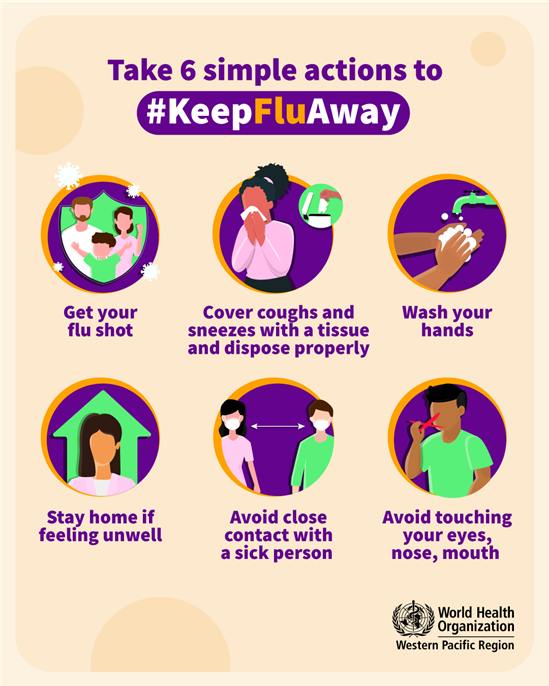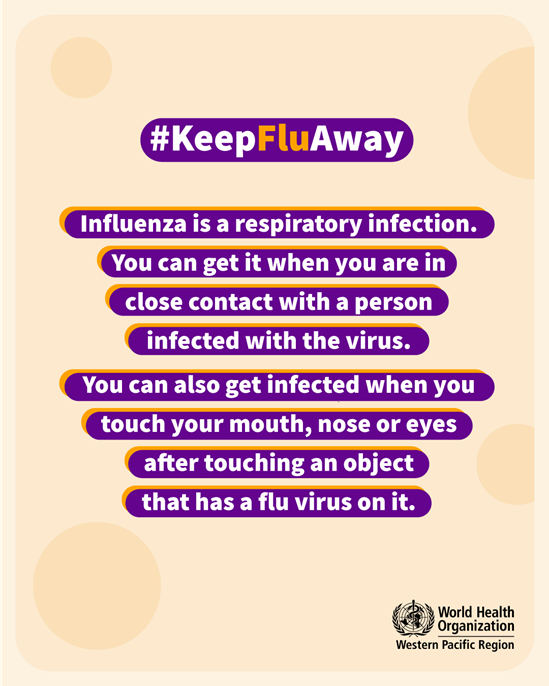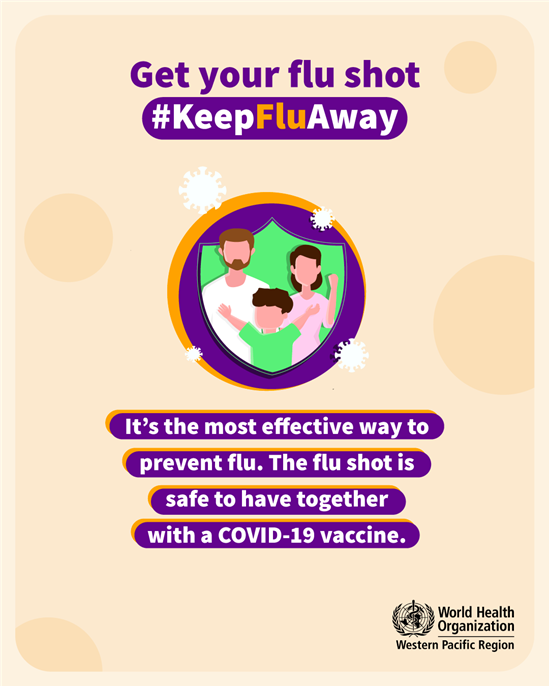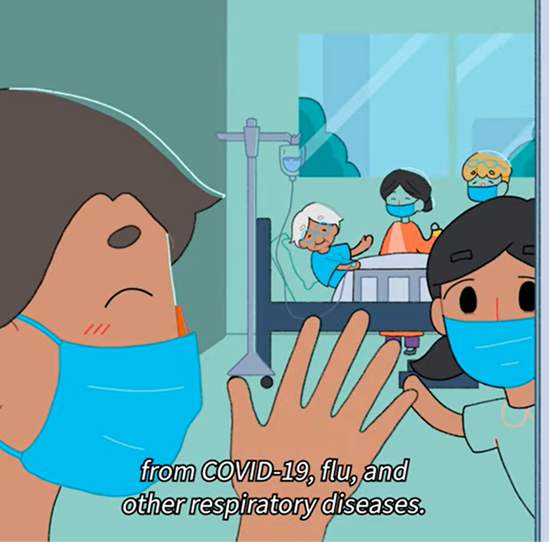Influenza (seasonal)
A respiratory illness that spreads easily
Influenza (flu) is a respiratory illness caused by influenza viruses that spreads easily through close contact with an infected person. The virus can be passed on from an infected person’s mouth or nose in droplets when they speak, cough and sneeze. It can also be transmitted when a person touches an object contaminated with flu viruses and then touches their mouth, nose or eyes.
Influenza is a year-round disease burden
Influenza causes various illnesses that can lead to hospitalization or, in extreme cases, death. WHO estimates it causes 290 000 to 650 000 deaths yearly due to respiratory diseases alone. Most influenza-related deaths in developed countries occur among people aged 65 and up. Meanwhile, research estimates that developing countries account for 99% of deaths in children under 5 with influenza-related lower respiratory tract infections. From an economic standpoint, a study predicted that the yearly cost of influenza pandemics is US$ 60 billion.
More information about the disease burden of influenza may be accessed here.
Symptoms are usually mild but can also be severe
Influenza symptoms are usually mild but can also be severe, especially among high-risk individuals. Symptoms include:
- Fever
- Cough
- Runny nose
- Sore throat
- Fatigue (tiredness)
- Headache
- Muscle and body aches
Most people recover from fever and other symptoms within a week without needing medical attention. However, influenza can also cause severe illness or death, especially in people at high risk:
- Pregnant women
- Children aged between 6 months to 5 years
- Older adults (aged 65 and older)
- Individuals with chronic medical conditions
- Healthcare providers
Prevention is better than cure
Vaccination is the most effective way to keep the flu away. Safe and effective vaccines are available and have been used for more than 60 years.
The flu vaccine is recommended for all. It is vital for people at high risk of influenza complications and those who live with or care for those at high risk. It is safe to get your flu shot and COVID-19 vaccine simultaneously.
To prevent transmission, people are also encouraged to take the following actions:
- Keep hands clean by regularly washing them with soap and water or alcohol-based hand rub.
- Cover coughs and sneezes with a bent elbow or a tissue and dispose of the used tissue correctly.
- Self-isolate if feeling unwell, especially when experiencing flu symptoms
- Avoid close contact with a sick person
- Avoid touching eyes, nose, and mouth
Treating influenza
In most cases, relieving influenza symptoms helps treat the disease. However, those at high risk of developing severe influenza complications are advised to consult their doctor and take antiviral drugs immediately.






/avian-influenza--preparing-food-safely.tmb-549v.png?sfvrsn=f081c874_1)






